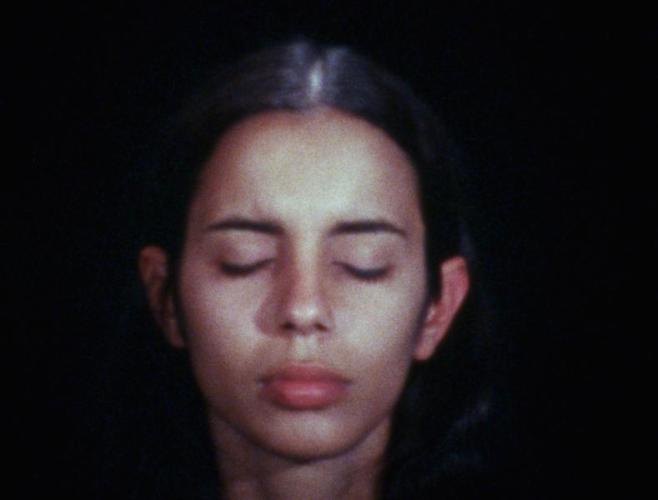
Still image from Ana Mendieta’s Sweating Blood, 1973, single channel, super-8mm film transferred to high-definition digital media, color, silent; 03:18 min., Smithsonian American Art Museum, Museum purchase through the American Women's History Initiative Acquisitions Pool, Administered through the Smithsonian American Women's History Initiative, 2021.38, © The Estate of Ana Mendieta Collection LLC. Courtesy Galerie Lelong & Co. Licensed by Artists Rights Society (ARS), NY
By Sara E. Cohen of Because of Her Story
Artist Ana Mendieta used a wide variety of materials, including her own body. Her innovative site-specific sculpture, earth art (created with soil), drawing, films, and performance art shocked and challenged audiences. Though Mendieta tragically died in her late 30s, her legacy endures through her work.
Mendieta was born in Havana, Cuba, in 1948. As children, she and her sister immigrated to the United States through Operation Pedro Pan (Peter Pan). During Operation Pedro Pan, which ran from 1960 through 1962, more than 14,000 children were sent to the U.S. after their parents opposed the Cuban Revolution led by Fidel Castro. These children were housed by the Catholic Church, aid societies, and the U.S. State Department.
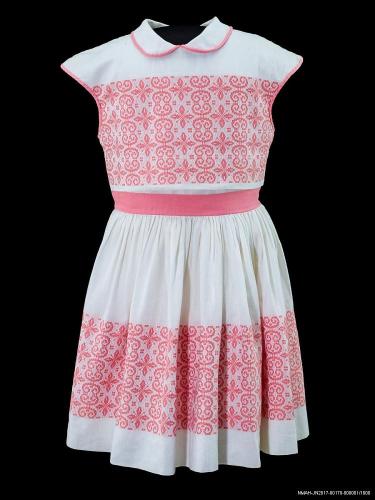
Dress from eight-year-old Margarita Lora, a child relocated as part of Operation Pedro Pan. National Museum of American History, Smithsonian Institution. Gift of Margarita Lora.
After coming to the U.S., Mendieta and her sister were raised together in multiple orphanages and foster homes in Iowa. Later in life, Mendieta used her art to explore the intense loss of being displaced from her family and homeland due to political exile. Another prominent theme through her work was violence, especially violence against women.
In 1969, she enrolled at the Center for the New Performing Arts at the University of Iowa. While in graduate school, Mendieta began the Silueta (“silhouette”) series, which she created on eroded streambeds. These sculptures were inspired by spiritual practices from Catholicism, Caribbean Santeriá, and pre-Columbian era rituals to make images of healing and eternal life-forces. Nearly 200 in total, the works signal her desire for renewal guided by nature. By carving into the earth, her work enacts the Santeria idea of monte adentro ("going back to the roots"). Her abstract outlines of women's bodies connect historic images of female power with her own figure. The Smithsonian American Art Museum’s collection includes a photograph of one of these works.
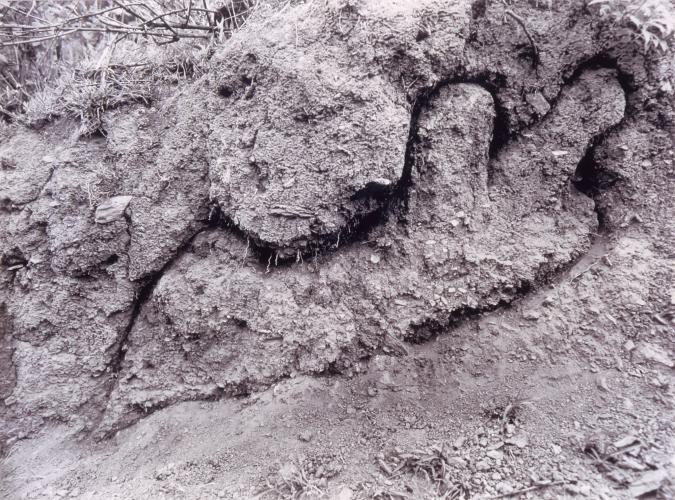
Ana Mendieta, Untitled, from the Silueta series, 1980, gelatin silver print, Smithsonian American Art Museum, Museum purchase through the Smithsonian Latino Initiatives Pool and the Smithsonian Institution Collections Acquisition Program, 1995.54.2, © 1980, Estate of Ana Mendieta
Mendieta also created more than 100 moving image artworks from the early 1970s to her death in 1985. Several of them are recordings of her performance art. The Smithsonian’s Hirshhorn Museum and Sculpture Gallery’s collection includes Blood + Feathers. In this short silent film, Mendieta appears nude. At one point she pours blood down her body, and then rolls in feathers. The Smithsonian American Art Museum’s collection includes the short film Sweating Blood, made one year earlier, where blood drips down her calm face. In both these films, Mendieta continues her tradition of using elemental and natural materials.
A third short film, Mirage, explores a daughter’s separation from family. Mirage is part of the collection of the Smithsonian’s National Portrait Gallery.
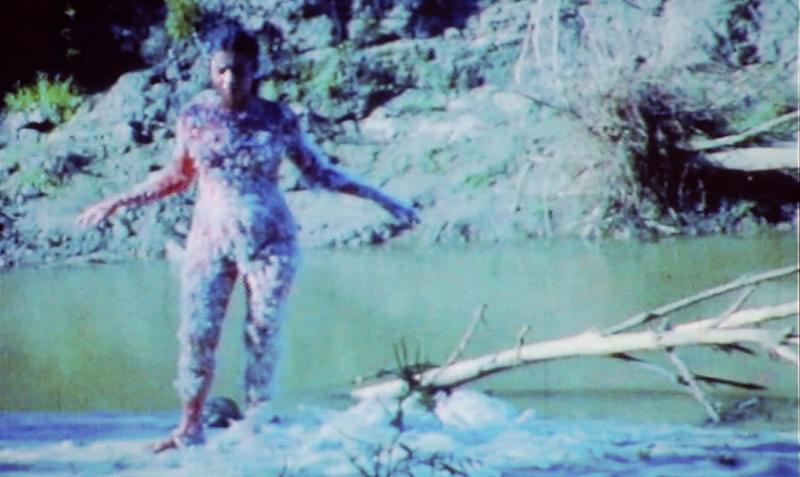
Still from Blood + Feathers by Ana Mendieta, 1974. Single-channel video; color; silent; 03:57 min. Hirshhorn Museum and Sculpture Garden, Smithsonian Institution. Gift of the Estate of Ana Mendieta Collection and an Anonymous Donor, 2005
In 1977, Mendieta participated in the exhibition What is Feminist Art? Activists Ruth Iskin, Lucy Lippard, and Arlene Raven shared this prompt with more than 200 artists. They displayed the artists’ responses at the Woman’s Building in Los Angeles, California. Mendieta submitted a mixed media piece titled “Microscopic view of the umbilical cord.”
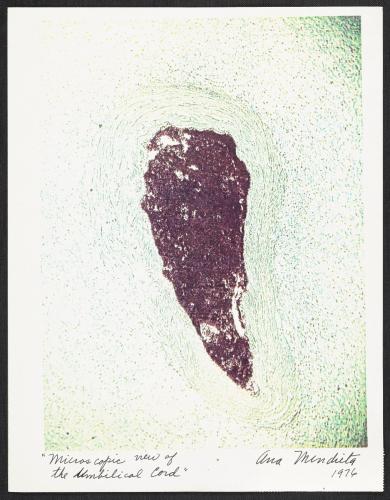
“Microscopic view of the umbilical cord” by Ana Mendieta, 1976. Mixed media. Woman's Building records, 1970-1992. Archives of American Art, Smithsonian Institution. © The Estate of Ana Mendieta Collection, LLC
The Smithsonian’s Archives of American Art includes several postcards Mendieta sent to art historian Judith Wilson. These postcards document the comfort Mendieta found in traveling to Cuba and Mexico. These travels allowed her to reconnect to her homeland. In 1980, Mendieta wrote to Wilson from the province of Havana. She said, “Here I am in Cuban soil working. It really is a great experience to be working in my homeland.”
See more of Mendieta’s works in the collections of the Smithsonian American Art Museum and the Hirshhorn Museum and Sculpture Garden. You can watch Blood + Feathers work in-person in the exhibition Put It This Way: (Re)visions of the Hirshhorn Collection through fall 2023.
Related Posts
Sara E. Cohen is the digital audiences and content coordinator for Because of Her Story, the Smithsonian American Women's History Initiative. She shares lesser-known histories of women through this website, the Because of Her Story newsletter, and Smithsonian social media.